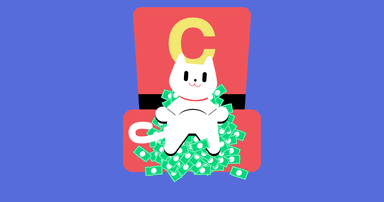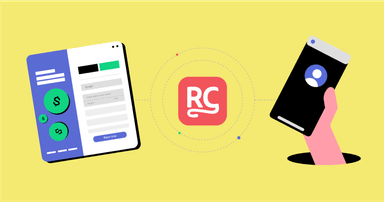Why We’re Customer Obsessed (And You Should Be Too)
"Be customer obsessed" are not empty words — they're central to our philosophy.


Jacob Eiting
“Customer Obsession” is our first company value at RevenueCat. I don’t think it’s actually that unique of a value, but I think it’s worth talking about why it’s so important. And why, for me, it runs deeper than just a company value — it’s also a philosophy of business, of economics, of the human condition.
It starts with thinking about companies as an engine for value creation.
What is “value”?
One definition I’ve heard that I think is fairly easy to digest, is that value is something you attach to things that allow you to achieve your goals. When you have a goal, things help you to achieve your goal have “value”.
And so, ideally, companies create value for people. Companies exist to build things that are useful for them and help them achieve their goals. And you capture a small percentage of that value in the form of revenue. So at RevenueCat, ideally, when we make something for people, it’s worth much more — i.e. it creates more value — than we actually charge.
If a product falls in a forest…
The reality of this makes customers the most important constituency in a business because they’re the only important part of the equation. If the customer’s side of the equation goes to zero, you don’t have a business. A business can have no investors, it can have no employees, but it can’t have no customers.
This is very ephemeral, but: value cannot exist without customers. Value only exists insofar as somebody else is able to make use of what you are creating. So you have to look at everything through the lens of the customer.
That’s why we put “Customer Obsession” number one. And why, if you give me an option, nine times out of 10, I’m going to try and do the thing that’s best for the customer.
Living the value
“Customer Obsession” aren’t just some words we print on the figurative wall. We try to live it, top to bottom.
Within our engineering and product teams teams, for example, we talk about four ways in which we are “Customer Obsessed”:
- Keep talking with customers and understanding their problems. This means basing our decisions on insights gleaned from real customers.
- Understand the impact of how our work might affect the customers. This means always considering how our work is affecting customers — positively and negatively — and validating these considerations.
- Fix issues that bug our customers. Even if something “works as designed”, if it doesn’t work for our customers then it doesn’t work.
- Build for customer adoption and impact, not to deliver the “perfect solution”. Another one of our values is “always be shipping”. And the end goal is that customers get value out of what we ship. So it’s better to ship something rough around the edges, if it solves real problems, than ship a perfectly polished feature that few people derive value from.
I also personally get to talk to customers on the Sub Club podcast. While these conversations don’t always directly inform the product, they help deepen empathy for the realities of trying to grow a subscription app business.
At RevenueCat, a customer can’t hold the phone the wrong way
Practically speaking, once in a while, there might be things we can’t do for customers, but we still have to put them on a pedestal and listen. Customers can sometimes be disrespectful, but we try to separate the person that is the customer from the concept. Is the customer always, right? Literally no. But values aren’t literal.
There is a famous Steve Jobs quote. When Apple was emailed by a journalist about the iPhone 4’s reception problems when held a certain way, Jobs responded directly: “Just avoid holding it in that way”.
At RevenueCat, a customer can’t hold the phone the wrong way. Sure, they may misread documentation or miss something seemingly obvious. And while that can be frustrating — that’s our problem. It means our documentation wasn’t good enough. That might not be literally true, but “customer obsession” means believing it, and asking “why couldn’t we help this customer”?
Customers know what they need, they know what they want, and they will tell you in all kinds of ways. They’ll tell you with their wallet, they’ll tell you via support requests. And so you really want to architect what you’re doing to listen to them.
Intuition will only take you so far
As a founder or an app maker, you probably have some sort of intuition about what your users want because maybe you were your target customer at some point. But once you get into the business of building for them, I think you very quickly lose touch with what it’s like to be them.
Maybe you’re very lucky in that the app you create is something you use every day but likely, the journey of you building an app is going to last many years and you may not always be the target audience for your app (or whatever it is you’re building). That’s why you need to have that constant communication with them because intuition will only take you so far.
If you’ve listened to our podcast, you will know that many of our customers are just as obsessed about their own customers. In our episode with kids app, Sago Mini, for example, they talk about their devotion to user testing.
“We have a lot of user testing. We have kids coming…every week into the office, play testing new apps, new toys. One of the best parts of the job is just hearing the kids running around screaming.”
Brennan Clark, Sago Mini
The gains from customer obsession are long-term
Beyond our internal philosophy, we regularly give our customers the same advice of “be customer obsessed”.
Like being favorable when changing the price of things. Raising subscription prices? Let your existing customers keep the old price. Considering following Twitter’s lead by passing the app store fees to customers? Maybe don’t do that.
Compounding is the eighth wonder of the world, and your business will compound. There is often little benefit to extracting additional value from the customers you already have (without creating new additional value in excess of that capture at least).
Of course, it’s not always possible, but I’m more apt to take the short-term hit in the interest of being customer friendly — because in the long-term, it will compound.
Are you as customer obsessed as we are? Maybe you’d like to work with us.
In-App Subscriptions Made Easy
See why thousands of the world's tops apps use RevenueCat to power in-app purchases, analyze subscription data, and grow revenue on iOS, Android, and the web.



